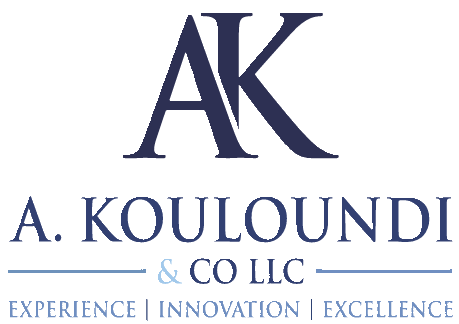
Family businesses are unique. They are not just businesses; they are a blend of family and enterprise, where emotional and economic systems are interlinked. While the business aspect is critical, the “family” factor carries equal weight, shaping governance, structure, and strategy. Yet, many family businesses overlook this delicate balance, leading to challenges that can jeopardize both the family and the business.
- The Dual Nature of Family Businesses
Family dynamics inevitably influence business decisions, and business issues often impact family harmony. This duality creates a unique set of challenges:
- Family Values vs. Business Realities: Families are built on emotions and security, while businesses thrive on efficiency, productivity, and data. Families tend to be risk-averse and slow to adapt, whereas businesses must embrace change and take calculated risks to survive.
- Generational Transitions: Family issues, rather than business issues, often determine the success of generational transitions. Without clear structures and agreements, conflicts can arise, leading to poor communication, unfair compensation, and even the disintegration of the business.
- Ownership Stages
Family businesses typically evolve through distinct ownership stages:
- Founder Stage: Typically, a family business originates with a single individual (the founder) who assumes dual responsibility for both the ownership and management of the enterprise. During this initial phase, significant issues are unlikely to arise, as the founder maintains full control over both the business operations and the family’s leadership. This alignment of ownership, management, and family authority under one individual ensures a unified direction and decision-making process, minimizing potential conflicts.
- Sibling Partnership Stage: As the founder expands the family business, the family itself also grows. Typically, the founder begins to distribute ownership among their children. At this stage, challenges are likely to emerge, as ownership and decision-making responsibilities are now shared among multiple individuals (siblings). These stakeholders may have differing perspectives, priorities, and approaches to both ownership and management, potentially leading to conflicts or inefficiencies if not properly addressed. This transition underscores the importance of establishing clear governance structures and communication frameworks to ensure alignment and sustain the business’s success.
- Cousin Consortium Stage: As siblings establish their own families, ownership inevitably extends to the cousin generation, resulting in a broader base of stakeholders and increased complexity. This phase often represents a critical turning point for family businesses, as the likelihood of rising tensions and diverging interests makes it significantly more challenging to maintain alignment and unity. It is not a myth that family businesses often struggle to survive beyond the cousin consortium stage. Statistics and studies on family-owned enterprises consistently highlight that a significant majority fail to transition successfully into the third generation and beyond. At this stage, the number of stakeholders multiplies, and with it, the diversity of perspectives, priorities, and expectations. Cousins, unlike siblings, may lack the same emotional connection or shared history, making it harder to foster trust and alignment. Additionally, as the family grows, the original vision and values of the founder can become diluted, leading to conflicting interests and disagreements over the direction of the business.
- So, is the Cousin Consortium Stage the ultimate limit for a family business’s growth and longevity?
The stark reality is that, most probably, the answer is yes, unless the family takes proactive measures to establish robust corporate and family governance mechanisms.
Understanding the evolution of ownership within a family business is critical. Each stage brings its own set of dynamics, risks, and opportunities, requiring tailored strategies to ensure alignment, unity, and long-term success. By recognizing the dual nature of family businesses and proactively addressing the challenges at each stage of ownership, families can build a legacy that endures for generations.
This begins with addressing at each stage of ownership the same critical question:
“Are we operating as a ‘Family Business’ or a ‘Business Family’?”
This distinction is essential, as it shapes their approach to governance, decision-making, and long-term strategy.
A Family Business prioritizes the family’s involvement and emotional ties, often blending personal and professional boundaries. In contrast, a Business Family focuses on aligning the family’s values and vision with the business’s strategic goals, ensuring that the enterprise operates with professionalism and clarity, even as ownership becomes more dispersed.
- The Path Forward – Corporate and Family Governance
Every family and every business is unique, with distinct dynamics, values, and goals. As such, the solutions required to address their specific challenges will naturally vary. However, the cornerstone of any successful family enterprise lies in the establishment of robust corporate and family governance mechanisms. These frameworks combine tailored structures, processes, and policies designed to promote harmony, ensure fair wealth distribution, and support sustainable business growth. By addressing both the emotional and economic dimensions of a family business, these mechanisms help align family and business interests, mitigate conflicts, and secure the legacy for future generations.
- We Are Here to Help
As a law firm with deep expertise in family business governance, we are uniquely positioned to assist and support you in designing and implementing these critical frameworks. Our knowledge and experience enable us to provide customized solutions that protect your legacy, while fostering unity and growth.
We can guide you through the development of the following key governance tools and structures:
- Succession Planning: Crafting a clear and strategic roadmap for leadership transition to ensure continuity and minimize disruption.
- Trusts: Establishing trusts to protect family assets and facilitate wealth and ownership transfer.
- Trustee Services: Providing professional trustee services to ensure the effective management and administration of trusts in alignment with the family’s goals and values.
- Family Office Establishment: Designing and setting up a dedicated family office to manage wealth, investments, and administrative needs, ensuring long-term financial sustainability.
- Family Constitution: Establishing a formal document that outlines the family’s values, vision, and governance principles to align all stakeholders.
- Family Council: Facilitating the creation of a platform for open communication and decision-making among family members.
- Advisory Boards: Introducing independent expertise to provide objective insights and support strategic decision-making.
- Committees: Forming specialized groups to address specific areas such as finance, governance, remuneration, or philanthropy.
- Mediation: Offering conflict resolution services to address disputes and preserve family relationships.
- Exit Plan: Developing a fair and transparent exit strategy for family members who wish to transition out of the business.
- Shareholders Agreement: Drafting a legally binding agreement to define ownership rights, responsibilities, and dispute resolution mechanisms.
- Code of Conduct: Creating a set of guidelines to govern behavior and interactions within the family and the business.
For more information contact us at info@kouloundilaw.com
